SPECIAL SECTION | 16
SPIELBERG GETS PERSONAL
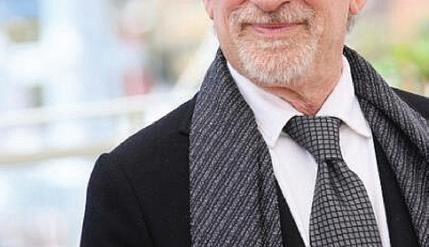
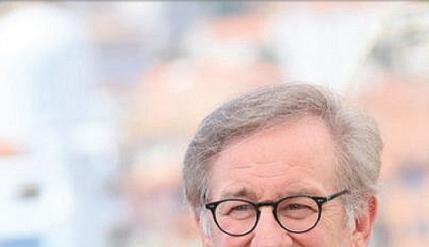
“The Fabelmans” is a semi-autobiographical movie about his Jewish upbringing
REPENTANCE BOT

Move over, tashlich: Twitter is the new place to atone



“The Fabelmans” is a semi-autobiographical movie about his Jewish upbringing

Move over, tashlich: Twitter is the new place to atone
SHANNON LEVITT | STAFF WRITER
Rabbis across Greater Phoenix, like rabbis the world over, are sitting down right about now to put their thoughts to paper as they prepare to address their congregants for High Holidays.





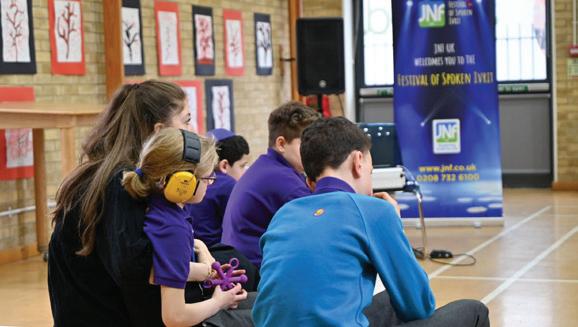
More than at any other time of the Jewish year, these sermons represent the best of long-form writing and deep
HIGH HOLIDAY SERMONS, PAGE 3
 SHANNON LEVITT | STAFF WRITER
SHANNON LEVITT | STAFF WRITER


Arizona is facing a water crisis. The Colorado River, which Arizona and other Western states depend on for water, is at record low levels — so low that cuts have been implemented already, and steeper cuts are on the way, especially for the state’s farmers.
With an acknowledged sense of urgency, Arizona House Speaker Rusty Bowers recently visited Israel to meet with leaders of water technology companies and legislative bodies in a bid to discover some of the desert nation’s secrets for dealing with a lack of water.

“We were there to learn,” Bowers told Jewish News. “There are educated and tested people in Israel on this issue.”
In fact, he met with so many people in a variety of places, he said it felt like “a forced march” at times, but the rigorous schedule paid off in the enormous amount of information he received.


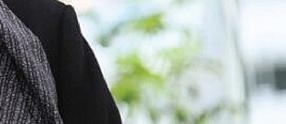
The main topics of discussion were desalination and its transportation issues, uses of newer technologies for determining water efficiency and its transport and regulation, especially in cities — “block to block, house to house,” he said.
For things like desalination to pan out, however, time and a whole lot of money are needed. Whether there is the stomach for the sacrifices, he said, “is the $3 billion question because that’s just a low ball of what we’re looking at for desal.”
One pointed conversation with the head of Mekorot, Israel’s national water company, stood out. Bowers said it was sobering because it emphasized that any water Arizona gets through desalination or other sources needs to be in a system that has supportable pressure gradients and does not leak. Arizona’s system is not where it should be.
“We need to get our order right in how we go about this,” Bowers said. “Phoenix, for example, generally has an old system. There’s no reason to put very expensive water into a leaky system.”
Bowers’ trip took place Aug. 5-12, at the suggestion of Gov. Doug Ducey, who went himself a few months ago to tour a desalination plant.
“The governor considers Israel the world leader in how to manage this precious resource and looks to it as a model,” said C.J. Karamargin, Ducey’s director of communications. “It was important for all people who are concerned, and in a position to do something about it, to see what Israel is doing.”
Sharon Megdal, the director of the University of Arizona Water Resources Research Center, has also spent a lot of time researching Israel’s water use and connecting people dealing with water shortfalls who she hopes can learn from the country’s experiences.
“They’ve been leaders in showing different ways to utilize, conserve, stretch and manufacture water supplies through desalination,” she said. Those dealing with similar water issues will have to find what’s relevant to their situations and ways to modify their approach.
For example, Arizona’s leaders will have to decide on the type of desalination and spend time doing research and planning. Arizona would face hurdles in both seawater desalination — no ocean bordering the state — and/or brackish water, highly salinated groundwater, desalination and where to put the wastewater in terms of energy costs and carbon footprint, she said. Both leave enormous amounts of salty water that cannot be placed just anywhere.
Bowers was most hopeful about Israel’s broad use of reclaimed water and brackish water and suspects that Arizona could learn to use its own brackish water, which his office defined as a mix of fresh and
salty water, originating from seawater, in underground aquifers.
In the Arava region, he and his wife tasted all kinds of vegetables grown with brackish water. “My wife and I are hooked on Israeli tomatoes,” he said.
“We have brackish water and maybe they would cough up some of their ideas for our local agriculture folks to try out.”
In the face of a crisis people might want to rush to an answer, Megdal said, but it’s important that those in charge spend time studying the options.
“These are big problems and there isn’t a single solution,” she said.
Bowers was impressed with Israelis’ focus on and respect for water, which is an ethic he wants Arizonans to feel. Ultimately, the people who have to pay the cost of their water won’t waste it, he said.
In terms of the equity in who shoulders those costs, Bowers said: “To make the system accessible — the cost has to be what the water is and what its costs are.”
Megdal said this was an area of significant difference between Israel, where water is centrally controlled by the government and costs are equal no matter where one lives, and a state like Arizona, which is decentralized. But she’s optimistic that the recently established Arizona Water Authority is a step in the right direction.
Bowers pointed out changes people can make now, like converting lawns from grass and moving away from swimming pools. He also applauded the water authority’s funding that will allow the state to accomplish some of this on a broad scale to help cities make costly changes.
He takes his advice to heart for himself and his neighbors, too.
On his property of 42 years in Usery Pass, northeast of Mesa, “I have foregone my lawn, and we emptied my lily pond last year,” he said. “But I have a neighbor who has two lakes and I’m thinking, ‘OK, sometime we’re
going to have to address that.’”
He said that Arizona and the other lower basin states have been planning for a water shortage by buying and holding water in storage for decades. Those supplies are needed now in the short term.
“We in Arizona have been doing as good or better than any other state in our water preparations,” Bowers said. “But we did not think this last push was going to come so quickly. We only have a few years now, unless nature decides to favor us differently, to get this right.”
Everybody from developers to everyday citizens expect there to be water when they turn on the tap, and “we don’t want to get to a place where that doesn’t happen,” he said.
The stress of dealing with this crisis has transformed him, he admitted. The balding Bowers quipped that until recently, he had hair as thick as the jovial painter Bob Ross. “That’s what worrying about water does to you,” he laughed.
And even though he doesn’t believe anyone can predict what will happen with climate change or that the drought will last forever, he said, “for now, this is our reality and we have to face it straight up.”
The Israelis he met, a number of whom live in inhospitable places and are hyper aware of how critical water is to their success, inspired him. He hopes to bring back some of the pioneering spirit he witnessed.
Bowers has 20 grandchildren, and he said it was important to leave them a good name and part of that legacy is the way he deals with assignments like this.
Bowers will leave the legislature at the end of this year’s term.
“However legacy plays in this, I want my part in it to be that I did the best I could and that I would in some way be watching out for them and all of their age group and our future as a state — and water is critical to all of it.” JN
January 7
January 21
February 4
February 18
March 4
March 18
March 25
April 1
April 8
May 6
May 20
June 10
July 8
July 29
August 5
August 19*
September 9
September 16
September 23
October 7
October 14**
October 21
October 28
November 4
November 18
December 2
December 16
*Best of Magazine **Annual Directory
WWW.JEWISHAZ.COM
| advertising@jewishaz.com subscriptions@jewishaz.com | www.jewishaz.com
PUBLISHER Jewish Community Foundation of Greater Phoenix


GENERAL MANAGER Rich Solomon | 602.639.5861 rsolomon@jewishaz.com

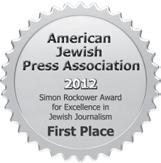
MANAGING EDITOR Mala Blomquist | 602.639.5855 mblomquist@jewishaz.com
STAFF WRITER
Shannon Levitt | 602.639.5854 slevitt@jewishaz.com
ADVERTISING SALES CONSULTANT

Jodi Lipson | 602.639.5866 jlipson@jewishaz.com
SUBSCRIPTIONS 602.870.9470 x 1 subscriptions@jewishaz.com
GRAPHIC DESIGNER
Jay Sevidal | 410.902.2313 ads_phoenixjn@midatlanticmedia.com
Roberts, Publisher | 2013-2016 Florence Newmark Eckstein, Publisher | 1981-2013 Cecil Newmark, Publisher | 1961-1981
Newmark, Editor | 1961-1981 M.B. Goldman, Jr., Founder | 1948-1961
PROUD MEMBER OF




HIGH HOLIDAY SERMONS
CONTINUED FROM PAGE 1


thinking. While some rabbis are just putting the finishing touches on their sermons, some procrastinators might be starting to sweat a little. For example, Scottsdale’s Congregation Or Tzion’s Rabbi Andy Green puts himself in the latter camp.

“I’m a notorious procrastinator,” he told Jewish News. “What I have to say and how I end up saying it won’t be finalized until closer to the big day, but it will be ready the morning I deliver it.”















He already knows some of the things he will be talking about: how the Jewish community has responded to the challenges of COVID-19 and how “social division has fragmented our communities in a way that didn’t exist before.”
In Paradise Valley, Temple Solel Associate Rabbi Debbie Stiel also plans to discuss “toxic polarization.” Though it’s “a very tough issue,” she said, “it is an important topic to face so that we keep connections with others, even if we disagree with them. We need to continue to see the holy in others despite our differences.”
Green, Stiel and other local rabbis intend to use the time and space they’re given each year during this period to provide thoughtful analysis of many complex ideas. They want their congregants to take this time to listen and reflect on their messages. While so much of everyday life seems to consist of simple and short bursts of ideas and thoughts, many programmed by social media algorithms, rabbis use these sermons to slow things down, think about timely topics and encourage others to do the same.
For example, after two years of mostly online High Holiday services, many of Greater Phoenix’s rabbis will be emphasizing the importance of community to their large and primarily in-person congregations.

Chabad Jewish Center of Mesa Rabbi Laibel Blotner said this is the perfect year to talk about community. He pointed out it is the hakhel year, a time when Jews have historically gathered following the shmita, or sabbatical year. He sees the timing as opportune.
“The fact that the first year in three years that Jewish people have an opportunity, uninhibited for the most part, to come together and be in our synagogues is also a year associated with gathering, is divine providence,” he said.
“God has given us this year that we can come to the synagogues and feel, for the most part, safe, and we should try to make sure that this is the largest Rosh Hashanah and the largest Yom Kippur.”
Temple Chai Associate Rabbi Bonnie Koppell in Phoenix will also be emphasizing the importance of community, especially the synagogue. She plans to talk about the present by invoking the past, that of her childhood Jewish community in Brooklyn.

“As we walked to one of the two local shuls on the High Holidays, it was a joy to see the streets fill with more and more
people and to sense the deep connection that we all felt to each other,” she described in one sermon.

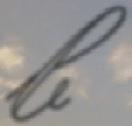



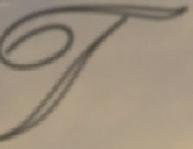
With so many members coming to Temple Chai in person after two years of live streaming, Koppell will tell her congregants: “We, all of us here together, are the creators and sustainers of this fragile and precious community.”
Rabbi Alicia Magal, spiritual leader of the Jewish Community of Sedona and the Verde Valley, is developing her sermon with the idea of “waking up.” She, too, will talk about new ways of creating community in, what hopefully, will soon be a post-COVID world.
“We’ve been in a kind of sleep over the past two years and are just now slowly awakening,” she plans to tell her congregation. While “we aren’t out of the woods yet,” she will encourage people not to remain “spiritually asleep to new possibilities.”
It is time to wake up to “new ways of interacting and showing up in our family, our community and the wider world,” which includes our responsibilities as citizens of a world that is imperiled on many levels, with “the poor, refugees, the war-wounded, the choking environment and the melting icebergs.”
Cave Creek’s Congregation Kehillah Rabbi Bonnie Sharfman will talk about how all of these same problems and responsibilities can “leave many of us feeling overwhelmed,” which sometimes leads to paralysis.
“There is so much for us to do to heal the injustice and pain in the world and also to heal the earth. Small things, in the communal aggregate, do move us forward. Kindness, compassion, commitment, teshuvah, as always, are sorely needed.”
Temple Solel Rabbi John Linder said, “At a time of great despair, Jews must do what we’ve always done — lean into hope.” The hope that he will speak about will be focused on “our temple’s youth and families, our country’s democracy and our obligation to be agents of change.”
Temple Kol Ami Rabbi Jeremy Schneider in Scottsdale will be discussing mental health and the toll two-and-a-half years of a pandemic and its pursuant isolation have taken on his congregation. While “we did a pretty good job of checking in on others, have we checked in with ourselves? What steps are we taking to address anxiety and depression?”
He will tell his audience how important it is “that in our annual gathering to make ‘atonement,’ we also make sure we are ‘at-one-ment’ with our mental health and ourselves.”
Chabad of the East Valley Rabbi Mendy Deitsch plans to address “the multidimensional human being and its inner strength to deal with today’s world issues.”
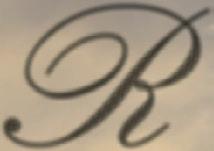
Temple Beth Shalom of the West Valley Rabbi Dana Evan Kaplan will talk about spiritual renewal and how to achieve it through prayer and positive psychology, which studies the traits that help people thrive. “It is based on the belief that people want to lead meaningful and fulfilling lives,
to cultivate what is best within themselves, and to enhance their experiences of love, work and play,” he explained.

Temple B’rith Shalom Rabbi Susan Schanerman in Prescott will be celebrating her first High Holidays with her new congregation. She looks forward to meeting “the entire congregation” and plans to focus “on personal themes of selfforgiveness, crafting the self and coming home to Judaism.”


In Chandler, NefeshSoul Congregation Cantor Roger Eisenberg, who will be writing and delivering his first ever High Holiday sermon, will focus on the concept of gratitude.

“Even in times of grief, we can be grateful for the compassion of those who comfort us. Even in times of fear, pachad, we can find hope in yirah, in the humility of awe,” he will tell his congregants.
Rabbi Stephen Einstein, who will be leading services for Congregation Beth HaMidbar in Yuma for his eighth year, will talk about change and remembrance.
The above is only a small sampling of what will be discussed in synagogues across the city. Much of it is serious fare, but on the lighter side, Einstein also will talk about Yom Kippur’s 100-plus rules for practicing business. JN


There are many rabbis and temples in Greater Phoenix, more than we had room to include. Please visit digital.jewishaz.com/issues/CommunityDirectory-2022/index.html for a comprehesive guide to all of our local spiritual resources.





 SHANNON LEVITT | STAFF WRITER
SHANNON LEVITT | STAFF WRITER



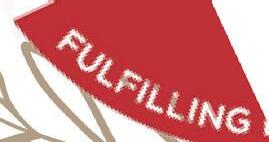



Tom Horne, the Republican and Jewish candidate for Arizona’s superintendent of public instruction, repeatedly said he wanted to talk about test scores in the debate on Sept. 14 with Kathy Hoffman, the Democratic candidate and current superintendent.
Richard Ruelas, reporter at The Arizona Republic and co-moderator, described the Citizens Clean Elections Commissionsponsored debate as more of a give-andtake exchange of ideas than a formal debate. Horne’s opening statement asserted that when he left (he held the superintendent office from 2003 to 2011), Arizona’s students scored 60% in math proficiency and 70% for reading and writing.
He said under Hoffman’s leadership proficiency scores have dropped to 42% and 42%, respectively. It was a point he returned to several times during the 30-minute debate.
Moderator Tom Simons of Arizona PBS asked Hoffman for her take on recent test scores, which were up slightly, but still saw most students failing reading and math.

Hoffman acknowledged, “we have


our work cut out for us,” especially after COVID-19 and big cuts to education. She said the state’s schools have made some





gains compared to the rest of the nation and “are moving in the right direction through the hard work of teachers and students.”
Rebutting Horne, Hoffman told Jewish News via email, “The biggest takeaway from the debate was my opponent’s
willingness to lie and misrepresent the facts regarding test scores. Comparing test scores from Tom Horne’s administration to mine is like comparing apples to oranges.” She asserted that the testing during Horne’s tenure was much less rigorous than today’s standard.
When the debate turned to critical race theory (CRT), something Horne has made opposing a lynchpin of his campaign, he said it would hurt students because it places primacy on one’s race.
He explained that it’s the opposite of the American ideal of seeing people as individuals, “brothers and sisters under the skin,” who should be judged without
quick to point out that a federal judge had struck down the ban in 2017 because it was racially and politically motivated.
She said Horne’s attack on CRT was also racially and politically motivated and that it’s not an important issue facing the state’s schools.
Horne’s campaign signs in Greater Phoenix highlight his attacks against CRT. He told Jewish News it was simply easier to fit that message on a sign than information about test scores. However, fighting CRT also receives top billing in his plan listed on his campaign website.
Horne clarified that while he doesn’t want students to focus on race, he does
administration’s support for teachers, especially in terms of classroom discipline. He said teachers are leaving due to lack of administration support for their discipline decisions and he supports an orderly classroom.
He said that in his 24 years serving on Paradise Valley Unified School District’s board, “we didn’t reverse a teacher one time and were known as the toughest district around.”

He told Jewish News, under Hoffman, “kids can even swear at a teacher and the administration won’t do anything about it because it might hurt the kids’ feelings.”
Hoffman said she has created a teacher pipeline and invested in teacher mentoring during her time in office.
Two heated moments occurred when Horne talked about the addition of Q Chat Space, a resource for LGBTQ students, to the Department of Education’s website.
Horne consistently referred to it as “Queer chat” and called it an opening for students to give detailed information online about their sexual lives and thoughts to anonymous “Q chatters,” who are not licensed professionals.
“We don’t know how many of them might be predators,” he asserted.
Hoffman was quick to defend the program, saying it is a resource recommended by the Center for Disease
Control and Mental Health America, a national nonprofit. She said her campaign is not focused on culture war issues, like attacks on the LGBTQ community.
Ruelas directly asked Horne about a recent campaign controversy: “Why would you have someone like David Stringer involved with your campaign?” He was referring to former state Rep. David Stringer, who was at one time charged with child sex crimes.
Horne said that Stringer was not a part of his campaign and had simply given a donation. He clarified that he had refunded his in-kind campaign donation, which involved putting campaign signs up.
Hoffman said his relationship with Stringer represented “a lack of judgment.”
Horne told Jewish News that he felt he did well on the debate stage.
“I got a lot of calls from people who said I did great,” he said. “I felt the same way because I was talking about what we need to do to get the test scores up and she was talking about irrelevant things.”
Horne is the only Jewish person ever elected to statewide executive office in Arizona and is a member of Temple Solel in Paradise Valley. JN
To view the debate, visit azpbs.org/horizon/2022/09/ superintendent-of-public-instruction-debate-3/.
 STEPHEN SILVER | JTA
STEPHEN SILVER | JTA








It would be difficult to debate what Steven Spielberg’s “most Jewish” film has been, after a career with highlights such as “Schindler’s List” and “Munich.” But it’s now clear what the famed director’s most personal film is.
On Saturday night, Sept. 10, Spielberg introduced “The Fabelmans,” his upcoming semi-autobiographical movie about his Jewish upbringing and his formative early years as an aspiring filmmaker, at a post-screening Q&A at the Toronto International Film Festival, where its debut earned a two-minute standing ovation and subsequent Oscar buzz in early critic reviews. Spielberg made no attempt to disguise the fact that the story is based on his life.
“It’s not complicated,” he said. “This is something, obviously, that I’ve been thinking about for a long time.”

The moderator of the Q&A, the festival’s CEO Cameron Bailey, noted that Spielberg grew up in a Jewish family “in mostly non-Jewish environments.” He asked the director about his

“growing engagement with your Jewish identity” throughout his career, and what it was like to “weave that into the film.” Jewish audiences have been highly anticipating how the film would incorporate Spielberg’s Jewishness since the official announcement that production was underway last year. The three-time Oscar winner co-wrote the script with his frequent collaborator Tony Kushner, right after the duo finished their work together on the recent “West Side Story” remake.
“I like very much the sort of easy way that Jewishness lives in this movie. It’s a very profound part of Steven’s identity, and of the Fablemans’ identity,” Kushner said at the talk. “But it’s a movie that’s about Jewish people, rather than entirely or exclusively about Jewishness or antisemitism or something. So it’s not a problem, it’s who they are.”

The film, which follows protagonist Sammy Fabelman as he falls in love with filmmaking from early childhood through high school, quickly establishes the family’s Jewishness. As the film begins, the Fabelman family (whose surname sounds like Jewish wordplay on the idea of fables, or storytelling) is based in New Jersey, and Sammy notes that he knows which house is his by the absence of Christmas lights. The family at one point sings Chanukah blessings, and later
there’s a Shabbat dinner with challah, kugel and brisket on the table.
The family then relocates to Arizona, and then Northern California, where it’s made clear there are far fewer other Jews around. In Phoenix, they are visited by Sammy’s old-world immigrant great uncle (Judd Hirsch) who tells tales of dealing with “Jew-haters” when he was in the circus, before darkly warning Sammy of how he may one day have to choose between his family and his art. These words are proven prophetic at a key moment later in the film.

Hirsch, who is Jewish, said in the Q&A that when he asked Spielberg about “the real guy” his character was based on, the director responded that he “never understood a word he said.” The director added that this was due to the Eastern European relative’s “thick accent.”
In the California part of the story, when he’s a high school senior, Sammy is bullied by antisemitic jock classmates who call him “Bagelman.” Sammy later dates a Christian girlfriend who tries to get him into Jesus.
Spielberg said that the antisemitic bullying he faced was “only a small aspect of my life… it isn’t any kind of governing force in my life. But I was made very, very aware of being an outsider, early on.” He added that it was only two kids who did the bullying and that he doesn’t blame
the school for the incidents.
“I think in proportion of the film, it’s an aspect of his experience in that moment,” Kushner said of that scene. “It’s part of his arc, Sammy’s arc, towards reclaiming film and figuring out things that film can do.”
The broader storylines of the film, which hits U.S. theaters in November, are also true to the details of Spielberg’s own life story. He was born shortly after World War II in Cincinnati, to a father who was a pioneering computing engineer and a mother who played the piano. Arnold Spielberg came from a family of Orthodox Jews; Steven attended Hebrew school as a child and had a bar mitzvah in Arizona. The family really did move from New Jersey to Arizona to California, he really had three younger sisters, and his parents really did split in the mid-1960s. As Spielberg grew into his filmmaking, divorce, absentee fatherhood and strained parent-child relations emerged as key themes in many of his movies.
Spielberg also did make amateur 8 mm films throughout his childhood before heading to Hollywood in the late 1960s and beginning his career as one of the most successful directors in history.
The film stars Paul Dano and Michelle Williams, neither of whom are Jewish, as Sammy’s parents. Seth Rogen — who as a character in his 2007 movie “Knocked
Up” famously praised Spielberg’s “Munich” as a movie about “Jews kicking ass” — plays the father’s best friend who looms large in the family’s marital struggles.
Spielberg and Kushner had discussed the director’s early life and a project about it for years — as early as 2005, when they were working on “Munich,” Kushner said. (Spielberg claimed in the Q&A that they began speaking about it while working on “Lincoln” in 2012.)
“Tony kind of performed the function of a therapist,” Spielberg said about their writing process. “I was his patient, and we’d talk, and I talked for a long time, and Tony fed me and helped me through this. But when COVID hit… we all had a lot of time, and we all had a lot of fear. And I don’t think anybody quite knew in March or April of 2020 what was going to be the state of the art, and the state of life, even a year from then. And I think in that sense I felt… if I was going to leave anything behind, what is the thing that I really need to resolve and unpack? My mom, my dad, and my sisters… it wasn’t now or never, but it almost felt that way.” But don’t take this film as a sign that the 75-year-old Spielberg is slowing down, he said.
“It is not because I have decided to retire and this is my swan song,” Spielberg said. JN

Iran’s leadership has returned to Holocaust denial, its leader made clear in an interview with “60 Minutes,” after distancing itself from the phenomenon.
“Historical events should be investigated by researchers and historians,” Ebrahim Raisi, the Iranian president, said in an interview on the CBS News flagship broadcast Sunday, Sept. 17, when he asked if he believed the Holocaust occurred. “There are some signs that it happened. If so, they should allow it to be investigated and researched.”
The interview aired at the same time that PBS was showing the first installment of a six-hour new documentary, by Ken Burns, about the Holocaust. “The U.S. and the Holocaust” is the latest prominent work to make use of the vast trove of research available to scholars and laymen to show in meticulous detail evidence of the Nazi genocide of European Jewry.
The falsehood that research that would deny the Holocaust is being repressed is

a commonplace trope among Holocaust deniers.
“Raisi’s call for ‘research’ to determine whether the Holocaust happened is ludicrous and dangerous,” Deborah Lipstadt, the U.S. antisemitism monitor, said in a statement. “His statement is a form of Holocaust denial and a form of antisemitism.”
Raisi, a hard-liner elected last year, was echoing the position peddled by Mahmoud Ahmadinejad, the president from 2005 to 2013, who made an ostentatious point of denying the Holocaust. The subsequent government, led from 2013 to 2021 by
and solid truth of history easily lies today, and will naturally lie in the future,” Kohavi said Monday, Sept. 19, while visiting Auschwitz, the Nazi death camp, the Times of Israel reported. “This is another reminder that such people should not be allowed to possess
Hassan Rouhani, a relative moderate, sought to distance itself from Holocaust denial.
Responding to a tweet quoting Raisi, Israeli interim prime minister Yair Lapid offered just two words — “Some signs” alongside four black-and-white photographs showing starved and murdered Holocaust victims. He was one of many people to lampoon the Iranian president’s comments on social media.
Lt. Gen. Aviv Kohavi, the Israeli army chief of staff, visiting Poland, said the tendency of the Iranian regime to deny the Holocaust was one reason Iran should never obtain a nuclear weapon.
“Anyone who lies and denies the painful
any capacity of any kind for development of weapons of mass destruction.”
In the interview, Raisi also repeated the long-held position of the Iranian government that Israel does not have a right to exist.
Meanwhile, Israel on Sunday issued an advisory citing increasing evidence of Iranian plots against Israelis abroad. “We estimate that in the coming period Iran will continue to work to promote damage to Israeli targets around the world, both in countries near Iran and in Western and European countries,” Israel’s National Security Headquarters said in the advisory. JN

“HISTORICAL EVENTS SHOULD BE INVESTIGATED BY RESEARCHERS AND HISTORIANS.”IRANIAN PRESIDENT EBRAHIM RAISI
















The recent, highly anticipated New York Times “expose” of Chasidic yeshivah education in New York State did not disappoint. The lengthy, front-page article painted a disturbing picture of a deliberately deficient secular education program in Chasidic schools, fraudulent misdirection of government funding for school programs and services, widespread corporal punishment within the schools and a growing problem of drug abuse and homelessness for those seeking to escape the oppressive strictures of their Chasidic upbringing. So, it came as no surprise that a few days later, New York’s Board of Regents voted overwhelmingly to impose a system for review of non-public education providers within the state and the enforcement of a secular curriculum in all schools.
Reaction to the article and the regulatory move were predictable. Those on the left focus on the Chasidic boys’ high schools’ refusal to provide basic English and mathematics instruction for their students; the students’ resulting abysmal test score failures; and the impropriety of these schools taking government funding for what is essentially an entirely religious education program. Those on the right challenge the bias and condescension of the report and those who promoted
it; criticize the lack of understanding or appreciation of the Chasidic community’s commitment to education — which doesn’t define success as the achievement of secular literacy. They emphasize the remarkable success of the intentionally insular Chasidic community, which has cultivated a thriving and growing community committed to religious values, volunteerism and charitable giving. And, of course, they defend the Chasidic community’s right to decide what is right for their own children — no less so than the Amish community, which
the U.S. Supreme Court exempted from high school instruction a half-century ago. As is often the case in these kinds of debates, those presenting the arguments often talk past one another. Each side is
IF THE INTENTION IS TO IMPROVE THE LIVES OF CHILDREN ENROLLED IN CHASIDIC SCHOOLS, AND REGULATORS ARE WILLING TO RESPECT RELIGIOUS CONCERNS OF THE INSTITUTIONS, WHY MANDATE INSTRUCTION STANDARDS OR HOURS OF COMMITMENT?
so focused on its own talking points that they ignore some of the fundamental issues that create the problem. For example, very little of the commentary focuses on the meaning or the proper measure of the regulatory requirement of “substantial equivalency” in connection with education provided in non-public
The long, complicated and tragic relationship between Jews and Germany was front and center last week. Israeli Prime Minister Yair Lapid made a brief, but intense, 24-hour visit to Germany as part of an effort to present Israel’s case against a renewed nuclear deal with Iran. But it was the symbolic messages baked into the visit that attracted the most attention and shined a light on just how complicated today’s Germany-Israel relationship is nearly 80 years after the Holocaust.
Lapid’s connection to the Holocaust is personal. His paternal grandfather, Bela Lampel, was murdered by the Nazis in the Austrian camp of Mauthausen in April 1945. Lapid’s grandmother and his father witnessed the abduction from their home in March 1944 and were later saved by Swedish diplomat Raoul Wallenberg. So, this visit by Lapid as prime minister of Israel was particularly poignant for him. And he brought reinforcements — he was accompanied
by five Holocaust survivors and their families who joined his delegation and he pointedly elevated the survivors to prominence during the visit. Indeed, as he exited his plane upon arrival, he walked arm-in-arm with Shoshana Trister, one of the survivors, who froze at the sight of the German military honor guard. “I
Olaf Scholz and other senior officials in an effort to coordinate a common position on Iran. He also signed a GermanyIsrael security, strategic and cooperation agreement, in which Germany committed to Israel’s security and Israel committed to play a role in building Germany’s new air defense force. The agreement also comes
THE MESSAGE FROM LAPID’S VISIT WAS CLEAR: WHILE WE DARE NOT FORGET THE PAST, WE CAN LEARN FROM IT AND MAKE OURSELVES BETTER.
said to the prime minister, ‘Look at their hats,’” Trister reported. She then relayed Lapid’s response: “And he said to me, ‘I’m holding you. You will go down with me. You are not alone.’”
That’s powerful stuff.
Lapid met with German Chancellor
schools. Nor do the warring advocates explore whether possible means can be developed to address the targeted schools’ performance problems without unnecessarily impinging on their religious concerns.
In this regard, the Regents’ regulatory approach, which imposes teaching requirements rather than establishing performance measures seems particularly problematic. If the intention is to improve the lives of children enrolled in Chasidic schools, and regulators are willing to respect religious concerns of the institutions, why mandate instruction standards or hours of commitment?
Instead, why not consider an outcomebased standard — equally applicable to public, private and home-schooled children? All the schools would be judged by the same standard and would be subject to the same consequences.
Such an approach would, of course, require the State Education Department to engage with the Chasidic schools — to understand their education and religious concerns and to help work through them. The alternative of imposing instruction requirements makes little sense, as it almost guarantees interminable litigation and further delay of the very educational goal the state claims to be pursuing.
upon the impact of Holocaust deaths while noting that time can heal some wounds and asserted that the deep ties between Germany and Israel “are proof that humanity always has a choice. Evil can be replaced by friendship.”
with economic and security benefits.
Lapid and his delegation visited Wannsee Villa, just outside Berlin, where Nazi leaders met in 1942 to adopt the “Final Solution,” and they held meetings in Munich. At each stop, Lapid’s theme was consistent: He repeatedly touched
Later that day, Lapid met with German President Frank-Walter Steinmeier. He thanked the German leader for supporting Israel in the battle against antisemitism and for his efforts to negotiate a compensation agreement for the families of the 1972 Olympics victims. This was particularly timely since the 50th anniversary of the Munich massacre, where six Israeli coaches and five Israeli athletes were murdered by the Palestinian Black September terrorists, was observed just days earlier.
The message from Lapid’s visit was clear: While we dare not forget the past, we can learn from it and make ourselves better. And without apology for his cautionary reminders, he acknowledged Germany’s outstretched hand. JN
are a diverse community. The views expressed in the signed opinion columns and letters to the editor published in the Jewish News are those of the authors. They do not necessarily reflect the views of the officers and boards of the Jewish Community Foundation, Center for Jewish Philanthropy, Jewish Federation of Greater Phoenix, Mid-Atlantic Media or the staff of the Jewish News. Letters must respond to content published by the Jewish News and should be a maximum of 200 words. They may be edited for space and clarity. Unsigned letters will not be published. Letters and op-ed submissions should be sent to editor@jewishaz.com.
Seventy-eight years ago this week, David
Ben-Gurion rose before the Asefat Hanivcharim, Palestine Jewry’s elected assembly, and delivered an explosive “j’accuse” against the Allies for abandoning Europe’s Jews during the Holocaust.
The words of the man who would soon be Israel’s first prime minister take on added significance in view of the upcoming release of Ken Burns’ three-part, six-hour PBS documentary “The U.S. and the Holocaust.” Its official website says the film “dispels” the “myth” that America “looked on with callous indifference” during the Holocaust.
By contrast, Ben-Gurion told the gathering of Jewish community leaders in Jerusalem on Sept. 12, 1944: “As millions of Jews were taken to the slaughter — young and old, infant and newborn, mother and daughter — the world leaders, those who shout slogans about democracy and socialism, looked away from the bloodshed and did not undertake rescue action — they did not even try to rescue them.”
Two months earlier, Ben-Gurion had spoken in similar terms at a ceremony on the 40th anniversary of the death of Theodor
Herzl. Addressing himself to the Allies, he thundered: “What have you allowed to be perpetrated against a defenseless people while you stood aside and let them bleed to death, never lifting a finger to help?…. Why do you profane our pain and wrath with empty expressions of sympathy which ring like mockery in the ears of millions who are being daily burnt and buried alive in the hell centers of Europe?”
These words were not uttered after the fact. The Holocaust still raged as Ben-Gurion spoke. Trainloads of Jewish deportees were being sent to Auschwitz every day. On the day of the Herzl speech, July 10, three trainloads of Hungarian Jewish deportees arrived in Auschwitz. Over the course of four days that week, more than 30,000 Jews were gassed.
For a few weeks earlier that summer, BenGurion and his colleagues in the leadership of Palestine’s Jewish Agency had mistakenly believed that Auschwitz was a labor camp. But when they learned in late June that it was in fact a death camp, they lobbied Allied diplomats in Europe, the Middle East and the United States to bomb the railways and bridges leading to Auschwitz, or the gas chambers, or both.
Future Israeli president Chaim Weizmann and future prime ministers Moshe Shertok (Sharett) and Golda Meyerson (Meir) were among those promoting the proposal in meetings with Allied officials. In early September, just before the aforementioned meeting of the Asefat Hanivcharim, Jewish Agency official Eliyahu Epstein (Elath) reported to Ben-Gurion about his unsuccessful efforts to persuade a Soviet diplomat in Cairo that the Allies should bomb the death camps.
Roosevelt administration officials falsely asserted that the only way to strike the railways or the death camp would be to “divert” planes from distant battle zones, thus undermining the war effort. That claim is repeated in the Burns film as if it were a fact. In reality, American planes were already flying over Auschwitz, bombing the oil factories in the death camp’s industrial

zone (where Elie Wiesel was among the slave laborers) — less than five miles from the gas chambers. One of those raids took place on Sept. 13, 1944, the day after BenGurion’s speech to the Jerusalem assembly.
In Ken Burns’ film, interviewees belittle the proposals to bomb the railways on the grounds that the Germans could have quickly repaired them. But that was true for all U.S. bombing attacks on railroads in Europe, yet it never deterred the Roosevelt administration and its allies from targeting them as part of the war effort.
George McGovern, the future U.S. senator and 1972 Democratic presidential nominee, was one of the young pilots who undertook those raids (including bombing the oil factories at Auschwitz). In a 2004 interview, McGovern argued that even if
HOLOCAUST DOCUMENTARY, PAGE 12
Iam one of those people who gobble up films and television shows about the royal family almost as soon as they come out. And yet, watching “The Crown,” my thoughts would run like this: “This is great television,” I would say after nearly every episode. “But remind me again why I should care what happens to these people?”
I’ve heard that befuddlement from a lot of friends in the wake of the outpouring of love and sadness that followed Queen Elizabeth’s death at 96 after a 70-year reign. A monarch with no power, a matriarch of a family with no real claim to fame other than their birthrights, she occupied a strange and unique position.
The media strategist Mik Moore captured that perplexity in a Facebook post.
“There seems to be a disconnect [between] those who see the queen as a ceremonial figure with no real power and those who see the queen as the head of a colonial empire who was complicit in oppression and genocide,” he wrote. “If she’s the latter she deserves to be held accountable and if she’s the former she [is] just a celebrity with a crown.
“If she’s just a celebrity… her death isn’t that important,” he continued. “If she had real power, her death IS important … but also it means the anger at her is justified.”
A number of pundits and historians took a stab at explaining why Elizabeth, and the British monarchy, matter. Historian
Amanda Foreman Elizabeth said she “embodied what you might call the spirit of the nation” and “personified the essence and values of Great Britain.” Similarly, the current chief rabbi of the United Kingdom, Ephraim Mirvis, eulogized the queen by saying she “embodied the most noble

values of British society.”
Rabbi Jonathan Sacks, Mirvis’ predecessor, had at one point praised Elizabeth as an interfaith champion, saying her meetings with faith leaders led the U.K.’s transformation into “a multiethnic, multifaith society.”
Sacks, Foreman and Mirvis suggest a few ways of thinking about Elizabeth beyond Mik’s dichotomy — as neither “ceremonial figure” nor culpable head of a colonial empire. As Sacks explained, Elizabeth wielded a kind of soft power by dint of her example, leveraging her ambiguous status to become “Defender of all Britain’s Faiths.”
Foreman and Mirvis, meanwhile, remind us that public figures can “embody” and “personify” values even when they aren’t elected or hold any real power. Elie Wiesel comes to mind. Although he was a gifted writer, his most important role was as an articulate survivor and witness to the Holocaust. When Wiesel died in 2016, at age 87, the grief was not just over the loss of one man, but of a living connection to a monumental and devastating historical event.
With Wiesel’s death, Jewry also lost

Iencounter the Torah portion Nitzavim twice at this season: once this week in the Torah reading cycle and then again on Yom Kippur day when we chant an alternative group of verses from Deuteronomy 29:9-14 and 30:11-20. When I chant the haunting High Holy day trop melody for Atem nitzavim ha-yom kulchem… “You stand this day, all of you, before God…” (Deut. 29:9-10) and look out at the full sanctuary, it is very powerful, for it seems as though, indeed, the elders, officials, children, spouses, visitors and equivalent of woodchoppers and water carriers are present, listening, taking in the message of inclusivity, feeling themselves a part of the larger community, inheritors of the covenant of our ancestors. And when I get to the passage Ki ha-mitzvah ha-zot, “Surely, this instruction which I enjoin
CONTINUED FROM PAGE 11
the railway lines could have been repaired, the damage would have delayed the deportations and saved lives.
“[I]t would have helped if we had bombed the railroad lines leading to Auschwitz. The purpose of those rail lines was to carry human beings to their death, and we might even have been able to use long-range fighter planes to get down right on the tracks and knock them out,” McGovern said. Regarding a junction through which trains passed on the way to Auschwitz, he said: “We should have hit that junction and disabled it. We should have hit the rail lines, even if we had to go back several times.”
It is also important to remember that there were bridges along those routes,
CONTINUED FROM PAGE 11
a unifying figure: When he died, JTA published an article asking if anyone could replace Wiesel as a “consensus leader” among American Jews, or was the “American Jewish community too divided to unite under any one person’s moral voice?”
Wiesel also wielded a degree of soft power, seen when he rebuked U.S. President Ronald Reagan for a planned visit to an SS cemetery at Bitburg, Germany.
Elizabeth, too, was a living link to World War II, and as such also personified
upon you this day is not too baffling for you, nor is it beyond reach. It is not in the heavens… Neither is it beyond the sea… No, the word/thought/thing/action is very close to you, in your mouth and in your heart, to do and observe it!” (Deut. 30: 11-14), the words and melody stir me to emphasize Karov me’od elecha – “VERY CLOSE to you.”
In my mind, the group of Israelites listening to Moses as he exhorts them to follow the path of righteousness when they enter the Promised Land merges with the congregation present today. The promise was made for the generation in the desert and also for “those that are not here today” — those generations yet to come, including us.
While we can spend our lives studying the Torah and sacred texts, we will never finish plumbing the depths of the layers of commentary and mystical messages contained in the written volumes and oral insights of our teachers. This simple verse encourages each of us at any level of learning to take it upon ourselves to recognize that yes, we can act now and not wait for explanations to be brought
and bridges could not be quickly repaired. Some of the requests put forward by Jewish groups at the same time actually named bridges that should be targeted. Those pleas were no secret. On July 10, 1944, the Jewish Telegraphic Agency reported that recent escapees from Auschwitz were urging the following: “The crematoria in Oswiecim [Auschwitz] and Birkenau, easily recognisable [sic] by their chimneys and watch-towers, as well as the main railway lines connecting Slovakia and CarpathoRuthenia with Poland, especially the bridge at Cop, should be bombed.”
Debating the options for Allied action, a commentator in the Ken Burns film argues that bombing Auschwitz might have been a bad idea because some of the inmates could have been harmed. That argument is disingenuous for two reasons. First, the United States could have bombed the
everything Britain was and became in the ensuing eight decades. If indeed she “embodied” the nation’s values, she also deserved scrutiny for how she confronted its failings. In a Washington Post essay, foreign affairs columnist Ishaan Tharoor concedes that “Elizabeth was perhaps not privy to all the sordid details of the operations carried out to preserve her empire after the end of World War II and through the 1960s.” And yet, he suggests, “Elizabeth cast herself as the happy steward of the Commonwealth” whose “history was hardly benign.”
(Wiesel too faced criticism that despite his devotion to human rights and dignity, he
back from far away in the heavens or across the sea! Right now, we can contribute to tikkun olam, repairing and healing the world. We can stand up straight, with pride and dignity and give full attention, as the strong verb Nitzavim indicates and resolve to give tzedakah, act with more compassion, observe Shabbat and the festivals to a greater degree and put into practice the teachings as we understand them at this moment in our current stage of development and observance.
This image of standing together in unity and reaffirming the earlier covenant at Sinai brings to mind a comment attributed to the first Chabad Rebbe Shneur Zalman: Just as a husband and wife need to reaffirm their commitment to each other when the early days of romantic attraction have given way to the day-to-day struggle to overcome accumulated disappointments, so too God and the people of Israel need to reaffirm the covenant at this later date (footnote in the Etz Hayim Torah and Commentary). At the moving ceremony of a renewal of vows of a husband and wife who have been married 25 or 50 years, there is this sense of
railway lines and bridges to Auschwitz without endangering inmates. Second, the presence of those prisoners was not the reason the Allies rejected the bombing requests; note that they bombed those oil factories in broad daylight, even though slave laborers were likely to be there. Likewise, the United States bombed a rocket factory in the Buchenwald concentration camp in daylight in August 1944, even though the workers would be there; many were indeed killed, but the Allies considered the attack to be justified despite that risk.
Nahum Goldmann, who was the Jewish Agency’s representative in Washington as well as co-chairman of the World Jewish Congress, repeatedly asked U.S. officials to bomb Auschwitz as well as the railways, and heard their excuses about not wanting to “divert” planes from the war effort.
Three days after Ben-Gurion’s speech
did not grapple publicly with the costs of Israel’s control of the West Bank and Gaza.)
There is, however, another way to think about the queen’s significance: as a sort of religious figure. Not a religious leader, and not a god exactly, but as an intermediary between profane humans and divine aspirations. In a prayer in memory of the queen, Mirvis wrote: “In an age of profound change, she signified order and justice; and in times of tension, she offered generosity of spirit.” That’s as good a definition as any for the function of religion. Americans don’t have monarchs, but we do have what Robert Bellah calls the American civil religion, with “its own
reminding the couple — and making those vows vibrantly current for their children and grandchildren — of the beauty, strength and commitment of those vows when they were first said at their wedding so many years before.
So, it is with us, as we stand again, gathered to hear the words of our ancient covenant renewed. May we all allow our thought, speech and actions to flow from the covenant and teachings received by our ancestors and renewed by us in each generation. May we be written in the Book of Living Fully in this New Year 5783. JN
in Jerusalem, Ernest Frischer of the Czech government-in-exile reported to Goldmann and the WJCongress that the Allies had been bombing “fuel factories…in Oswiecim and Birkenau,” not far from the “extermination installations.” Goldmann pointed out that fact to Allied officials, to no avail. They were, as Ben-Gurion put it, not willing to even “lift a finger” to rescue Jews.
In a recent JTA interview, Burns asserted that President Roosevelt “could not wave a magic wand” but did his best to help the Jews during the Holocaust. Ben-Gurion, who actually lived through those days and was an eyewitness to Roosevelt’s abandonment of the Jews, understood the reality far more clearly. JN
The views and opinions expressed in this article are those of the author and do not necessarily reflect the views of JTA or its parent company, 70 Faces Media
prophets and its own martyrs, its own sacred events and sacred places, its own solemn rituals and symbols.” Such rituals and symbols represent the purposes and the meaning of a nation.
In our case, those symbols include the Stars and Stripes, the Statue of Liberty, the national parks, late leaders who stood for something bigger than themselves. We put bald eagles and dead presidents on our coins; in England, they put their queens and kings. JN
The views and opinions expressed in this article are those of the author and do not necessarily reflect the views of JTA or its parent company, 70 Faces Media.
We asked five noted chefs and food writers what they will serve at home to mark the Jewish New Year, and (spoiler alert) they all plan to weave symbols of sweetness — hallmarks of the holiday — into their menus. Long live apples and honey!
But the apples may be in the form of a confit, and the honey might be replaced by silan (date syrup). And in place of brisket and Manischewitz, consider grilled vegetables and an aperitif.
ADEENA SUSSMAN
Israel-based food writer Adeena Sussmann, author of “Sababa,” will serve a sticky, sheet pan chicken made with honey followed by her grandmother’s honey cake. To kick off the holiday meal, her “Pomegroni” — like a Negroni, but with fresh pomegranate juice substituted for Campari. Pomegranates are in season in Israel in September, and are often incorporated into the holiday meal.
POMEGRONI
Yields: 2 cocktails
• 6 ounces (¾ cup) pomegranate juice
• 2 ounces (¼ cup) sweet white vermouth or Lillet
• 2 ounces (¼ cup) dry gin
• Generous splash Angostura bitters
• Blood orange or other orange wheels
Directions
1. In an ice-filled cocktail shaker, vigorously shake the pomegranate juice, vermouth, gin and bitters. Pour into two ice-filled rocks glasses, add more bitters to taste, and garnish with orange wheels. The recipe can be multiplied (minus the ice) and stored in a pitcher for up to one week and can be freshened with more bitters as needed.

ITAMAR SRULOVICH
London-based Itamar Srulovich — podcast host, cookbook author and co-founder of the Honey & Co. miniempire — holds an “orphans’ Rosh Hashanah” each year with his wife and partner, Sarit Packer, for friends who don’t have a New Year celebration of
their own. “One thing we never miss out on is apples and honey,” said Srulovich. The couple samples at least a dozen types of honey and several varieties of apples. Srulovich offers a recipe for grilled pumpkin, apples and chestnuts that he discovered during his travels in Turkey, cooked on an outdoor grill (or charred in the oven).
GRILLED PUMPKINS, APPLES AND CHESTNUTS
Reproduced from “Chasing Smoke: Cooking Over Fire Around the Levant” by Sarit Packer & Itamar Srulovich, (2021, Pavilion)
Serves: 4 as a starter or 6 as a side
• 1 small pumpkin or 2 small onion squash
• 2 Golden Delicious or Pink Lady apples
• 2 Tbsp olive oil
• 1 tsp sea salt
• ½ tsp freshly ground black pepper
• 12 chestnuts
• 1 head of red radicchio or red endive
For the dressing:
• juice of 1 orange
• 2 Tbsp cider vinegar
• 2-inch piece of fresh ginger, peeled and grated
• 2 Tbsp dried barberries (or you can use dried currants)
• 1 Tbsp honey
• 2 Tbsp olive oil
Directions
1. Mix all the dressing ingredients together and set aside until you are ready to serve. If you can, make it at least one hour in advance of serving, for the best flavor.
2. Cut the pumpkin into thick slices or wedges (no need to peel), remove the
Finally, your time is your own. To re-invent, to re-invigorate, or just to relax, right nearby. And active adults can find such a perfect oasis for it, right in the heart of Phoenix. With the features to enhance your life at every stage.



To schedule a tour, call (480) 781-4730 or visit TerracesOfPhoenix.com

reWhen you’re here, you’re always near.ROSH HASHANAH, PAGE 14 The Pomegroni cocktail. COURTESY OF ADEENA SUSSMAN VIA THE NOSHER






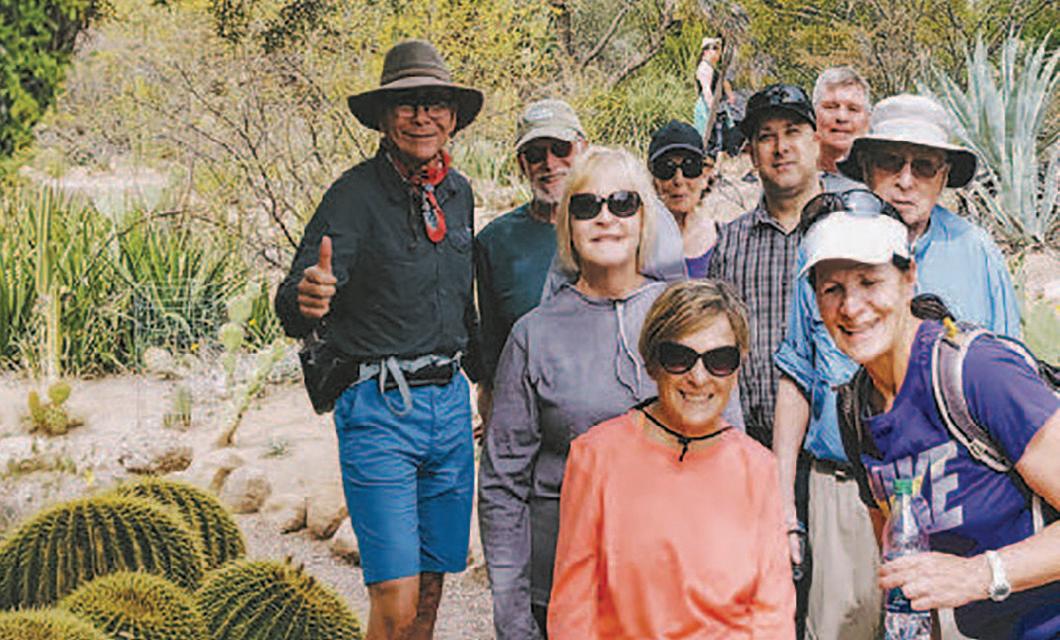

seeds and place on a baking tray. Slice the apples into 1-inch thick rounds (cut through the core) and add to the tray. Drizzle with the olive oil and season with the sea salt and pepper. Remove from the tray and place the pumpkin and apple slices on a hot grill to char for about 3-4 minutes on each side, then return them to the oily tray.

3. Slit the chestnuts carefully with a sharp knife so they don’t explode and place in a mesh tray or colander over the fire to roast. Shake the tray/colander every 30 seconds or so, till the skins crisp and start to open – about 12-14 minutes.
4. Break the radicchio into separate leaves, place on a large platter and top with the slices of grilled pumpkin and apple. Peel the chestnuts and break them up, scattering the pieces all over the salad, then dress generously and serve.
5. To cook without a BBQ: Roast the oiled, seasoned pumpkin in a hot oven at 430 degrees for about 20 minutes, then transfer to a griddle pan over a mediumhigh heat to char for 3-4 minutes each side. Griddle the oiled and seasoned apples on both sides for the same length of time. Roast the chestnuts in the oven for about 10 minutes until the skins start to open, but don’t forget to score them first.
Pati Jinich, cookbook author and host of “Pati’s Mexican Table,” hopes to try all new foods from different parts of the world. If you, too, are looking for something different, Jinich suggests you try her Veracruz gefilte fish. With a piquant, Mexican twist, it celebrates different culinary worlds colliding, inspired by Pati’s grandmother who arrived in Mexico, at the port of Veracruz, from Poland. Serve it hot with slices of challah and pickles.
MEXICAN-STYLE GEFILTE FISH
Yields: 20 patties
For the fish patties:
• 1 pound red snapper fillets, no skin or bones

• 1 pound flounder fillets, no skin or bones
• ½ white onion quartered, about ½ pound
• 2 carrots peeled and roughly chopped, about ¼ pound
• 3 eggs

• ½ cup matzah meal
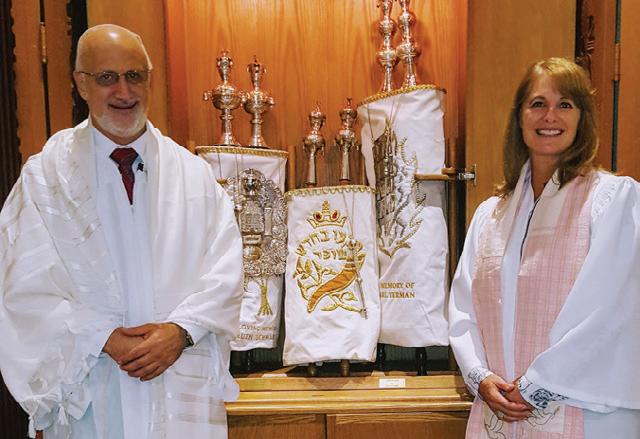

• 2 tsp kosher or sea salt, or to taste


• ½ tsp ground white pepper, or to taste

For the red sauce:
• 3 Tbsp safflower or corn oil

• ½ cup white onion, chopped
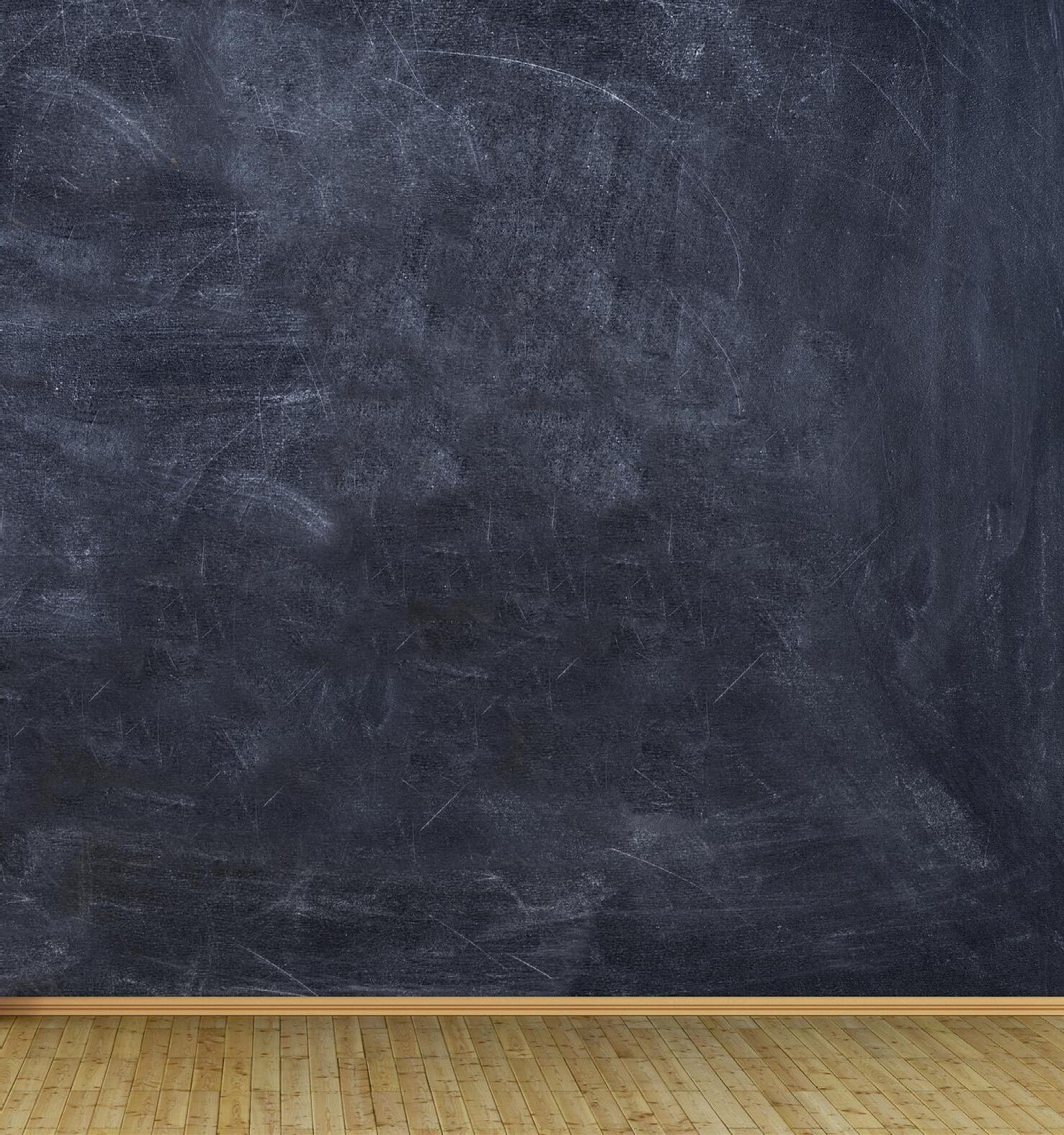
• 1 28-ounce can crushed tomatoes
• 3 cups fish broth or water
• 2 Tbsp ketchup
• 1 tsp kosher or sea salt, or to taste
• ¼ tsp ground white pepper or to taste
• 1 cup manzanilla olives stuffed with pimientos
• 8 pepperoncini peppers in vinegar brine (chiles güeros en escabeche), or more to taste
• 2 Tbsp capers
Directions
1. To prepare the fish patty mixture: Rinse the red snapper and flounder fillets under a thin stream of cool water. Slice into smaller pieces and place in the food processor. Pulse for 5-10 seconds until fish is finely chopped but hasn’t turned into a paste. Turn fish mixture into a large mixing bowl. Then place the onion, carrots, eggs, matzo meal, salt and white pepper into same bowl of the food processor. Process until smooth and turn into the fish mixture. Combine thoroughly.
2. To prepare the red sauce: Heat the oil in a large cooking pot over medium-high heat. Add the chopped onion, and let it cook for 5-6 minutes, stirring, until soft and translucent. Pour the crushed tomatoes into the pot, stir, and let the mix season and thicken for about 6 minutes. Incorporate 3 cups water, 2 tablespoons ketchup, salt and white pepper. Give it a good stir and bring to a boil. Reduce the heat to low and bring sauce to a gentle simmer. Continue to simmer while you roll the gefilte fish patties.
3. Place a small bowl with lukewarm water to the side of the simmering tomato broth. Start making the patties. I like to make them about 3 inches long, 2 inches wide and 1 inch high, in oval shapes. Wet your hands as necessary, so the fish mixture will not stick to your hands. As you make them, gently slide each patty into the simmering broth. Make sure it is simmering and raise the heat to medium if necessary to keep a steady simmer.
4. Once you finish making the patties, cover the pot and bring the heat to low. Cook them covered for 25 minutes. Take off the lid, incorporate the manzanilla olives, pepperoncini peppers and capers. Give it a gentle stir and simmer uncovered for
20 more minutes, so the gefilte fish will be thoroughly cooked and the broth will have seasoned and thickened nicely.
MICHAEL SOLOMONOV
Solomonov — chef, restaurateur and cookbook author, known for extolling and preparing Israeli food — will return to his roots this year with his Mom’s Honey Cake with Apple Confit. It’s a classic honey cake, moistened with brewed coffee and lots of honey, topped with an elegant apple confit, sweetened with honey, cloves and vanilla. The confit has savory applications, too. It’s great, he said, served with chopped liver.
HONEY CAKE WITH APPLE CONFIT
Yields: 1 loaf
For the cake:
• 2 ½ cups all–purpose flour

• 2 heaping tsp baking soda
• 1 cup sugar
• ½ tsp salt
• pinch ground cinnamon
• 3 large eggs, lightly beaten
• 1 ¼ cups brewed coffee
• 2/3 cup honey
• 6 Tbsp canola oil
For the apple confit:
• 3 apples, peeled and sliced thinly crosswise
• 1 cup sugar
• 1 Tbsp honey
• 2 cinnamon sticks
• 1 vanilla bean, split
• 3 cloves
Directions
1. For the cake: Preheat the oven to 350 F. with a rack in the middle. Line two 5-by-9-inch loaf pans with oiled parchment paper. Combine the flour and baking soda in a bowl and whisk well.
2. In a bowl of a stand mixer, combine the sugar, salt, cinnamon, eggs, coffee, honey and oil. Mix on low speed until blended. Add the flour mixture and continue mixing just until combined. Divide the batter evenly between
A strong, experienced and trusted voice for Arizona
Republican Candidate in the NEW District 8 AZ House of Representatives


35-yr Career in Local & Federal Law Enforcement
Small Business Owner/Operator
Community Volunteer & Leader
Tempe Born, Raised, Educated, & Resident Constitutional Liberties, Freedoms & Justice for ALL Americans


bill4az.com ★ Bill@Bill4AZ.com ★ 480-223-8034

I’m a retired Air Force enlisted veteran. I swore an oath to the constitution 40 years ago and I have never wavered. I will fight to maintain your constitutional rights and freedoms.
Donate at https://secure.actblue.com/ donate/campaign-to-electscott-podeyn-1




Move over, tashlich: Twitter is the new place to atone, thanks to a bot programmed by Jewish coders who want users to apologize better.

While the tradition of symbolically throwing bread, representing sins, into a body of water may be a more familiar High Holiday custom, a new Twitter bot aims to address “fauxpologies” on social media.
“Repentance Bot” allows users to tag the account when they see an apology that they believe falls short. The bot then replies to the apology with encouragement to do better and a comic strip laying

out five steps to take to do so.
The steps are those laid out in Rabbi Danya Ruttenberg’s forthcoming book, “On Repentance and Repair: Making Amends in an Unapologetic World.” Out next Tuesday, the book uses the traditional Jewish concepts taught by the 12th-century Jewish philosopher Maimonides to discuss contemporary issues of surviving violence and lays out a framework for making amends in a meaningful way.
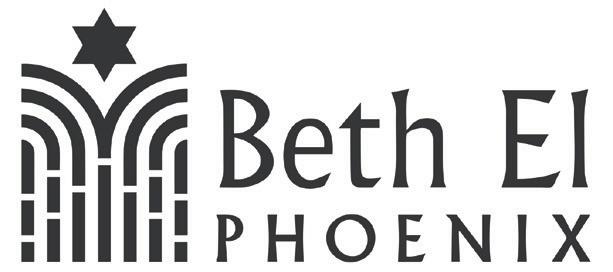
Repentance Bot is meant to distill some of the lessons from the book and make them visible, Ruttenberg said.
“We live in a culture where people do not have a roadmap when harm is
• ¼ tsp salt
• 1 cup all-purpose flour
• powdered sugar, as needed
the prepared loaf pans. Bake until a toothpick inserted in the center comes out clean, about 30 minutes. Decrease the oven temperature to 275 degrees.
3. For the apples: Toss the apple slices with the sugar, honey, cinnamon, vanilla bean, and cloves. Arrange in a single layer in a large ovenproof skillet or a baking pan. Add enough water to just cover the apples. Press a sheet of parchment onto the surface of the water.
4. Cover the skillet tightly with foil, bring to a simmer over medium-high heat, and transfer to the oven. Bake until the apples are just tender, about 1 hour. Cool to room temperature, transfer to a lidded container, and refrigerate until cold. Serve with the honey cake.
Dorie Greenspan, food writer and cookbook author, isn’t sure she will be preparing a holiday meal. But if she were, she knows exactly how she would end it: with Szarlotka, a Polish apple cake that straddles the divide between pie and crumble. The crust, she says, “is delicious,” the filling of apples and raisins are the flavors of Rosh Hashanah, for her.
SZARLOTKA
Ingredients
• 3-4 (1.5 lb) medium apples, like Granny Smith
• juice of ½ a lemon
• 3 large eggs
• 1 cup sugar
• 2 tsp vanilla extract
Directions
1. Preheat the oven to 350 degrees. Grease and line a 9” springform pan with parchment paper; you can also use a 9” round or square baking pan for this recipe.
2. Peel and core the apples. Cut the apples into 1” pieces, about ¼” thick. Toss the apples in lemon juice, and then add them to the baking dish.
3. In a large bowl using a hand mixer, or in a stand mixer fitted with the whisk attachment, combine the eggs and sugar. Alternatively, you can beat the eggs and sugar by hand using a whisk. Beat until the eggs are pale, fluffy and have doubled in size, about 3-4 minutes. Add the vanilla extract and beat for one more minute.
4. Sift in half of the flour and salt to the egg mixture, and fold the dry ingredients into the batter. Sift in the remaining flour and salt, and fold them in until they are just incorporated. Be careful to gently fold in the dry ingredients and to not overmix the batter.
5. Pour the batter over the apples in the baking dish. If needed, use a spatula or spoon to smooth the batter over the top so it evenly covers the apples.
6. Bake for 45-50 minutes until golden brown and firm on top, or until a cake tester comes out clean. Allow the cake to cool for at least one hour prior to serving.
7. Before serving, sprinkle the cake with powdered sugar. Szarlotka can be made a day in advance and stored covered at room temperature.
caused,” Ruttenberg told the Jewish Telegraphic Agency. “This is basically an experiment in public education, to try to see if we can move the culture towards showing people what taking responsibility and making change looks like.”

In one recent example, Repentance Bot was tagged underneath a video of the athletic director of Brigham Young University addressing fans after a Duke University volleyball player and her other Black teammates were attacked with racial slurs during a game against BYU.
“You’re a 10, but you need some help doing the work of repentance and accountability,” reads the tweet, which references a recent meme and is followed by the cartoon.
Unlike some Twitter bots that call out bad behavior on social media, including @RacismDog and its now-defunct cousin, @AntisemitismCow, Repentance Bot aims to do more than name and shame.
It launched on the first day of the Jewish month of Elul — the last month of the Jewish year and the beginning of a period of reflection ahead of the High Holidays of Rosh Hashanah and Yom Kippur, the Jewish New Year and Day of Atonement — and is meant to help people improve themselves.






The ideas and prayers of Yom Kippur lend themselves to innovation, said David




Zvi Kalman, who created an online Jewish confessional booth, AtoneNet, that offered an early intersection of ancient Jewish practices and contemporary digital tools.
“In the same way that on Hanukkah people will innovate menorahs or on Pesach people will innovate Seder plates, on Yom Kippur, they want to innovate liturgies,” Kalman said. “What else are you going to innovate? You literally can’t eat anything. So it’s this.”
Reboot, the Jewish arts nonprofit, offers 10Q, an annual online questionnaire that stores responses securely for a year, then returns them by email the

April 24th to May 3rd, 2023




Uniworld S.S. Beatrice
following year to facilitate respondents’ reflection on their personal growth. And the Yom Kippur-themed eScapeGoat (also known as @Apologybot) appeared on Twitter in 2013 and would “collect” users’ sins when tagged.
That bot was created by Russel Neiss, a Jewish technologist and educator who coded Repentance Bot and worked with the Jewish digital consulting company Tiny Windows to produce it on Ruttenberg’s behalf.

Repentance Bot, as with many similar bots, has a sense of humor. It is meant to be “fun and funny,” while also serving as an educational tool, said Ruttenberg, who
last month announced that she would be donating to the National Survivor Network to begin to make amends for personally benefiting from a Jewish foundation tied to sex offender Jeffrey Epstein.
“People will engage with it to have a little fun with it as well as trying to do meaningful public education,” she added.





In one meta-example, Repentance Bot had published a tweet in a robotic font that was not compatible with ALT text, an HTML attribute that allows for verbal image descriptions. Visually impaired readers may rely on a program that reads ALT text aloud, and if there’s no ALT text, they may not be able to interact with the text or image at all. Repentance Bot learned of the incompatibility and wrote an apology note for the error, along with an updated version of the previous tweet and a promise to “teach other bots this important human factoid.”
Those vows reflect the to-do list in the bot’s comic strip, which begins with taking responsibility without making excuses and ends with making a different choice in the future.
Repentance Bot is about “distilling [apologies] down to really oversimplified, easy steps,” Ruttenberg said. “And they’re not easy. None of those steps in real life are easy.” JN
and well-appointed river view staterooms and suites, with the finest linens, towels and Savoir® beds • Onboard fitness center, plus exercise and wellness classes


• Ship wide Internet and Wi-Fi access • Onboard entertainment and enrichment
• Bicycles and Nordic walking poles for onshore use • Virtuoso shipboard credit.
Book early for the best cabin availability.
For more information, contact Joanie Small at 602-318-5664 or Myra Orkin at 480-231-8909.
Shanah Tovah u-metukah from the Board of Rabbis of Greater Phoenix, providing leadership to the community.Rabbi Bonnie Sharfman President Rabbi Jeremy Schneider Vice President Rabbi Sara Mason-Barkin Secretary Rabbi Mark Bisman and Rabbi John Linder Co-Treasurers Rabbi Stephen Kahn Immediate Past President Inspired by lessons from Rabbi Danya Ruttenberg’s book, “On Repentance and Repair,” the Repentance Bot is an experiment in public education around apologies. COURTESY OF CAROL YEPES/GETTY IMAGES
FSome simply do not function well while less onerous fast.

HARD TO DIGEST

Now this might be different for everyone but in general stay away from heavy meat dishes, fried foods or lots of dairy. Because you know, Jewish stomachs.


2. EAT FOODS THAT HAVE FIBER AND WATER

Foods with lots of fiber will keep you fuller longer and foods with water, like fruits and vegetables, will keep you hydrated. Chickpeas or lentils are a great vegetarian protein source to eat, especially a dish like mujaderra. A hearty chicken soup with noodles or rice and lots of veggies is another safe bet.

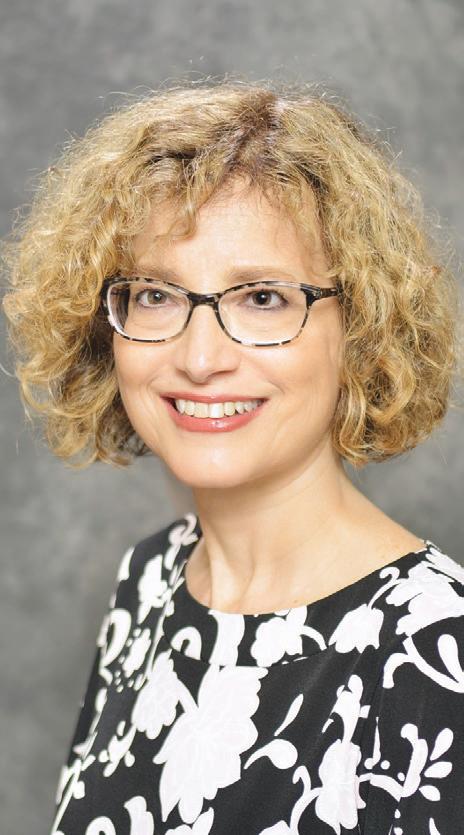
3. AVOID SALT
Salty foods like olives, pickles, chips, canned soup or dishes made with those
bouillon cubes will bloat you and make you even more thirsty. So stick to something
Too much dessert before fasting may cause your blood sugar to spike up and then come crashing down, which can be unpleasant at its least and cause a headache or moodiness at its worst. Too much sugar will also make you thirsty, like salt, and will have you craving more sweets during your fast.
5. DRINK WATER
This is pretty obvious but make sure to drink plenty of water, not only at the meal right before the fast begins but during the days preceding as well.
6. AVOID EATING TOO MUCH
Eat a moderate-sized meal that leaves you satisfied but not unbuttoning your pants. You will feel uncomfortable and it will be more difficult to digest a monstrous-sized meal. JN
























































Hundreds of Jews from all over the world have gathered in Abu Dhabi, the capital of the United Arab Emirates, ahead of the two-year anniversary of its establishment of diplomatic ties with Israel.
But the crowds aren’t in town to honor the Abraham Accords — at least not directly.
They came to party Wednesday at the largest Jewish wedding in the history of the UAE, which the bride and groom, emissaries of the Chabad movement who are living in that country, timed to coincide with the anniversary of the signing of the accords.

About 1,500 people, including dignitaries and Emirati royals as well as rabbis stationed around the world, attended the wedding of Rabbi Levi Duchman, 29, who was born in
Brooklyn and has been living in the UAE since 2014, and Lea Hadad of Brussels, 27, according to the media relations department of the Chabad-Lubavitch movement.
The wedding “is a source of great national pride, as a demonstration and living







experience of the Emirates’ longstanding investment in creating a culture of coexistence and religious diversity,” read a statement to the media about the event.
Chabad emissaries, who typically stay for many years in their postings, are usually dispatched as couples. Only a few rabbis are appointed head emissaries, as Duchman has been, before they are married. Over the past eight years, he has overseen the opening of a Jewish school, Hebrew supplemental school, ritual bath and the government-licensed kosher agency of the UAE, which has a few thousand Jews, according to the statement. Hadad knows what it means to be a Chabad emissary. Her father is the chief rabbi of Brussels, and her grandfather set up the Chabad community in Milan.

Duchman is one of several Orthodox rabbis working to cultivate Jewish life in the UAE, including Elie Abadie and Yehuda Sarna, who are not affiliated with Chabad. Prior to moving to Abu Dhabi, he lived with a sister and her family in Morocco, where he became committed to Jews in the Arab world, according to the Chabad statement.
The wedding date was carefully chosen not just to match the anniversary of the Abraham Accords but because the date in the Hebrew calendar is significant to Hasidic Jews, according to Chabad. Wednesday is the Hebrew birthdate of both the Baal Shem Tov, the 18th-century founder of the Hasidic movement, and Chabad’s founder, Rabbi Shneur Zalman of Liadi.
4:30-6:30 p.m. Join The Nosher online as food writer and cooking instructor Susan Barcoas shares how to make two traditional Sephardic break fast recipes: pumpkin bourekas and chicken with preserved lemon and olives. Cost: Free. For more information or to register, visit thenosher.com.

TUESDAY, SEPT. 27
Movie Musicals and Beyond with Marcia Weinberg: 11 a.m.-12 p.m. Join the JFCS Center for Senior Enrichment & Creative Aging for a lecture of Movie Musicals and Beyond with Marcia Weinberg. For more information, visit jfcsaz.org/events/.
MONDAY, OCT. 3
Mitzvah Monday: 1-2:30 p.m. Come to the J Kitchen inside the Valley of the Sun Jewish Community Center, 12701 N. Scottsdale Road, Scottsdale, and bake cookies for patients and their families at Hospice of the Valley. For more information, visit vosjcc.org.
SUNDAY, OCT. 9
FitnessFest Fundraiser at The J: 6 a.m.-2 p.m. Join the Valley of the Sun Jewish Community Center, 12701 N. Scottsdale Road, Scottsdale, for a day of fitness for members and nonmembers while supporting a good cause. The goal of FitnessFest is to raise money for The J and breast cancer research. 20% of all proceeds will be donated to the Virginia G. Piper Cancer Center. For more information, visit vosjcc.org.
WEDNESDAY, OCT. 12
5783 Simchas Beis Hashoevah Concert with Chabad: 7-9 p.m. Arizona’s Grand Sukkot celebration comes to the Ina Levine Jewish Community Campus, 12701 N. Scottsdale Road, Scottsdale. Chabad centers in Arizona will be hosting the annual Simchat Beis Hashoevah celebration with singer and entertainer, Boruch Sholom. For more information, visit chabadmesa.com.
SUNDAYS
BAGELS: 9-11 a.m. Join the Valley of the Sun Jewish Community Center, 12701 N. Scottsdale Rd., Scottsdale, for Bagels And Gabbing Every Last Sunday of the month in-person. Grab a bagel and a cup of coffee and enjoy some time with your friends and make new ones. You must register to attend. Bagels and coffee will be provided. Cost: Free for members, $5 for guests. For more information and to register, visit apm.activecommunities.com/ valleyofthesunjcc/Activity_Search/1787.
MONDAYS
Mahjong: 10 a.m.-12:30 p.m. Join the East Valley Jewish Community Center, 908 N. Alma School Rd., Chandler in-person for mahjong. This program is intended for players with prior experience and for those who have received the COVID-19 vaccination. Masks will be required. Cost: Free. For more information and to register, visit evjcc.org/mahjong. For further questions, call the EVJCC at 480-897-0588.
THURSDAYS
Storytime at Modern Milk: 9:30 a.m. Join Modern Milk, 13802 N. Scottsdale Rd, #163, Scottsdale for an in-person storytime for babies, toddlers and preschoolers. We will integrate favorite children’s books and songs while giving parents new ideas for play. Cost: $5. For more information and to register, visit modernmilk.com/after-baby.
SUNDAYS
Soul Study: 7:15 a.m. An online class exploring the secrets of the Tanya and Jewish mysticism, taught by Rabbi Pinchas Allouche. Cost: Free.
Chassidus Class: 9 a.m. Learn about the Chasidic movement with Rabbi Yossi Friedman. Cost: Free. For more information, visit chabadaz.com.
Jewish War Veterans Post 210: 10 a.m. Any active duty service member or veteran is welcome to join monthly meetings, now virtual, every third Sunday, Cost: Free. For more information, email Michael Chambers at c365michael@yahoo.com.
Anxiety in the Modern World: 6 p.m. Learn the secrets of the Torah for living stressfree in the current environment in a virtual class with Rabbi Boruch, with Chabad of Oro Valley. Cost: Free. Tune in using this link: zoom.us/j/736434666. For more information, visit chabadaz.com.
MONDAYS
Ethics of Our Fathers: 7 p.m. Learn with Rabbi Zalman Levertov online. Tune in at: bit.ly/2Y0wdgv. Cost: Free. For more information, visit chabadaz.com.
Quotable Quotes by our Sages: 7 p.m. Learn with Rabbi Shlomy Levertov online. Tune in at: JewishParadiseValley.com/ class. Cost: Free. For more information, visit chabadaz.com.
Learning to Trust in God: 7:30 p.m. Learn with Rabbi Yossi Friedman online. Tune in at: ChabadAZ.com/LiveClass. Cost: Free. For more information, visit chabadaz.com.
Torah & Tea: 7:30 p.m. Learn with Rabbi Yossie Shemtov online. Cost: Free. For more information, visit Facebook.com/ ChabadTucson.
TUESDAYS
Let’s Knit: 1:30-3:30 p.m. Share the pleasure of knitting, crocheting, etc. and help others with a project or pattern. Can’t knit? We can teach you! Every level welcome. We will
at cteen.clickmeeting.com/east-valley. For more information, visit chabadaz.com.
SATURDAYS
Saturday Mindfulness Gatherings: 9:30 a.m. Hosted by Hospice of the Valley. To join by phone, dial 1-253-215-8782, meeting ID 486 920 2119#. To get the Zoom link or for more information, contact Gill Hamilton at ghamilton@hov.org or 602-748-3692.
Book Discussion: 1:30-2:30 p.m. Join Or Adam Congregation for Humanistic Judaism on the third Saturday of every month for a virtual book discussion. For more information and to register, contact oradaminfo@gmail.com.
be sitting outside at the Ina Levine Jewish Community Campus and social distancing. Cost: Free. For more information, visit vosjcc.org
Maintaining an Upbeat Attitude: 7 p.m. A class exclusively for people in their 20s and 30s, learn how Jewish Mysticism can help with your attitude with Rabbi Shlomy Levertov online. Cost: Free. Tune in at: JewishParadiseValley.com/YJPclass. For more information, visit chabadaz.com.
WEDNESDAYS
History of the Jews: 11:00 a.m. Learn the Jewish journey from Genesis to Moshiach online with Rabbi Ephraim Zimmerman. Cost: Free. Tune in here: zoom. us/j/736434666. For more information, visit chabadaz.com.
Torah Study with Temple Beth Shalom of the West Valley: 11 a.m.-noon. TBS of the West Valley’s weekly virtual study group explores that week’s portion and studies different perspectives and debates the merits of various arguments. Intended for adults, Torah study is open to students of all levels. The goal is to achieve an understanding of what the text is and what it can teach us in the contemporary world. For more information, contact the TBS office at (623) 977-3240.
The Thirteen Petalled Rose: 1 p.m. An online Kabbalah class that studies “The Thirteen Petalled Rose” by Rabbi Adin Even-Israel Steinsaltz, focusing on the many foundational and transformational concepts of Kaballah and Jewish Mysticism and applying them to everyday life. For more information or to join, visit cbtvirtualworld.com.
JACS: 7:30-8:30 p.m. Virtual support group for Jewish alcoholics, addicts and their friends and family on the first and third Wednesdays of the month. Cost: Free. For more information, email jacsarizona@gmail. com or call 602-692-1004.
THURSDAYS Ladies Torah & Tea: 10:30 a.m. Learn about the women of the Torah with Mrs. Leah Levertov online. Cost: Free. Tune in at: ourjewishcenter.com/virtual. For more information, visit chabadaz.com.
Talmud - Maakos: 11 a.m. Learn with Rabbi Shlomy Levertov. Cost: Free. Tune in at: JewishParadiseValley.com/YJPclass. For more information, visit chabadaz.com.
Teen Discussions: 7-8:30 p.m. Learn with Rabbi Tzvi Rimler online. Cost: Free. Tune in
FRIDAYS
In-person services: Congregation Beth Israel is holding services in the Goldsmith Sanctuary limited to 100 people, excluding clergy and staff. Members and guests must be fully vaccinated (two weeks since your last vaccination) and wear a mask. Children may attend and must be able to wear a mask for the duration of the service. Participants must pre-register by Thursday at 5 p.m. Priority will be given to members first and then guests. If there are more requests than available seats a lottery system will be used. To make your reservation, contact Gail Gilmartin at 480-9510323 or at ggilmartin@cbiaz.org.
In-person services: Temple Chai is holding Friday evening (5:30 p.m. nosh, 6:15 p.m. service) and Shabbat morning (varying dates and times). For more information, contact Sheana Abrams at (602) 971-1234 or sabrams@templechai.com.
In-person services: Congregation Or Tzion is holding Friday evening (6 p.m) and Shabbat morning (9:30 a.m.) services indoors. Services are also live streamed at otaz.org/livestream. For more information about services, events and membership, visit congregationortzion.org or call 480-342-8858.
Baby & Me Shabbat: 9:30 a.m. on the first Friday of the month. Join the Bureau of Jewish Education of Greater Phoenix for this free program for parents and their little ones to welcome Shabbat. For more information, visit bjephoenix.org.
Tot Shabbat in the Park: 9:30 a.m. Free totShabbat every Friday morning at Cactus Park. Shabbat music, toys and a meaningful pre-school Shabbat experience. Is it your child’s birthday? Sponsor a Shabbat for $36.00. For more information and to register, visit playdatesbydesign.com/ upcoming-classes.
Shabbat at Beth El: 11-11:45 a.m. Celebrate Shabbat with songs, blessings and inspirational teachings. Rabbi Stein Kokin from Beth El Congregation will lead us the first Friday of every month. Special guests will be welcoming Shabbat during the remainder of the month. For more information or to join, visit bethelphoenix.com.
Welcome Shabbat: 11-11:45 a.m. Join the JFCS Virtual Center for Senior Enrichment each Friday for a soothing and inspiring program to welcome Shabbat. Each week a different guest host will lead the program with song and celebration. Cost: Free. For more information, visit jfcsaz.org/cse.
Families enjoyed treats, drinks and the blowing of the shofar on Sept. 11, at Chabad of Oro Valley’s Rosh Hashanah fair.

Tadd Wille, Chandler assistant city manager, spoke to the East Valley Jewish Community Center’s Tuesdays at the J group on Aug. 30, to share the latest about what’s happening in Chandler.

Arizona Jews for Justice had a big turnout on Sept. 19, when the group hosted volunteers to make foodbag kits for the pets of people who are experiencing homelessness. COURTESY OF EDDIE CHAVEZ CALDERON

The Levenbaum Chabad House at ASU welcomed new students at the Freshman ChaBBQ on Aug. 14.
Leni Reiss, left, visits with Dr. Marina Izak, Magen David Adom deputy director of National Blood Services, at the inaugural meeting of American Friends of MDA, Phoenix Women’s Division. The event, Sept. 12 at House of Diamonds in Phoenix, featured a report from Dr. Izak on her recent experiences as a volunteer healthcare provider at a refugee camp near Ukraine.

OF LENI REISS
Over 100 students attended this fun event on Aug. 23, at the Law Tigers Yard at the Levenbaum Chabad House at ASU.
OF RABBI SHMUEL

CALENDAR CONTINUED FROM PAGE 21
Erev Shabbat Service: 5:30 p.m. Rabbi Alicia Magal will lead a service livestreamed for members of the Jewish Community of Sedona and the Verde Valley. Cost: Free. For more information and to obtain the Zoom link, visit jcsvv.org/contact.

Kabbalat Shabbat and/or Shabbat morning service: 6:30 p.m. on various Friday nights and 10:00 a.m. on various Saturday mornings. Congregation Kehillah invites you to join Rabbi Bonnie Sharfman and cantorial soloists Erica Erman and Scott Leader either in person or via Zoom. For dates, visit
OBITUARIES
congregationkehillah.org/event/. Register by emailing info@congregationkehillah.org. For safety reasons, please register ahead of time.
Pre-Shabbat Kiddush Club: 6 p.m. Say kiddush with Rabbi Mendy Levertov online. Cost: Free. Tune in here: ourjewishcenter. com/virtual. For more information, visit chabadaz.com.
CALENDAR Print | Digital |
Carol will be missed and remembered lovingly by her family. She will also be remembered as the driving force behind the introduction of “Learn Not to Burn” and other fire and safety programs in Arizona and across the country during her tenure as program director for the Phoenix Fire Department.

Donations in her memory can be made to the Breast Cancer Research Foundation (give.bcrf.org).
Born Dec. 9, 1937, in Warren, Ohio, he was the middle child of and only son of Rose and Harry Whitman. Like his father, he loved sports and travel. Like his mother, he was a life-long learner and voracious reader. Marshall entered the world without a breath, suffering from an oxygen deprivation that left a lifelong impact on his intellect but didn’t dampen his curiosity nor slow his capacity to barrel through many presumed limitations.
He graduated from Warren G. Harding High School in 1955 and worked as a young man on the custodial staff of King’s department store in his hometown, before moving to Southern California to live near his sister Phyllis, happily on his own for the first time in his mid-50s.
Throughout his life, Marshall’s warm, friendly disposition and genuine interest in others drew people to him. He was deeply involved in the community of Kivel Campus of Care in Phoenix, where he had lived since 2006. During his years at Kivel, Marshall served on the residents’ committee and joyfully spent his time participating in classes, outings, games and social activities. He was a regular at Shabbat and holiday services, often scheduling other activities around them. In the quiet of his apartment, he enjoyed listening to CDs from his eclectic music collation — jazz, rock, and classical ranking high among his favorites — and watching sports.
Though he’d happily watch any football game, anytime, it was the Cleveland Browns, Arizona Cardinals and Ohio State Buckeyes that truly held Marshall’s heart. (Go Brownies, Go Cards, Go Bucks!) Marshall was proceeded in death by his parents, Rose and Harry Whitman and sister Sandra (Frank) Goodman. He is survived by his sister, Phyllis (John) Shaffer; nephew, Louis Goodman (Tom Siebenaler); nieces Margie (Lenny) Sussman, Stefanie (Don) Foreman and Holly Goodman; and many great nieces and nephews, and a great-great niece.
He will be deeply missed by friends, family and his Kivel family.
In lieu of flowers, donations can be made in his name to Kivel Campus of Care Community.
Mt. Sinai Cemetery
Selling Below current market value !!! 1 Single plot in the highly desired Temple Chai Section. May be upgraded to a companion (burial for 2) space through the cemetery
Judi Glass 602-448-4099 juditravel@icloud.com
MT. SINAI CEMETERY
Contact: Salo Herman 602-206-5022 saloherman@gmail.com
Senior
Lifestyle
From home health aides to financial planners, independent living facilities to nursing homes, this is the perfect venue to showcase how your business can help older Jewish residents navigate retirement.

Planner
November 4
October 28
Parents are looking for the best for their children. Showcase your offerings to our readers.
Contact Target over 42,500 Jewish readers with a mix of print and digital.


October 27 @ 7:00 pm - 8:30 pm PDT

Location: Temple Solel
Rabbi David Wolpe
This year’s Sherman Minkoff Memorial Lecture will be delivered by Rabbi David Wolpe on the topic of “What is the Jewish Future in America?” This talk surveys antisemitism and its impact on Jews in America, religiosity and its decline, and looks at the question of the future of the American Jewish community.

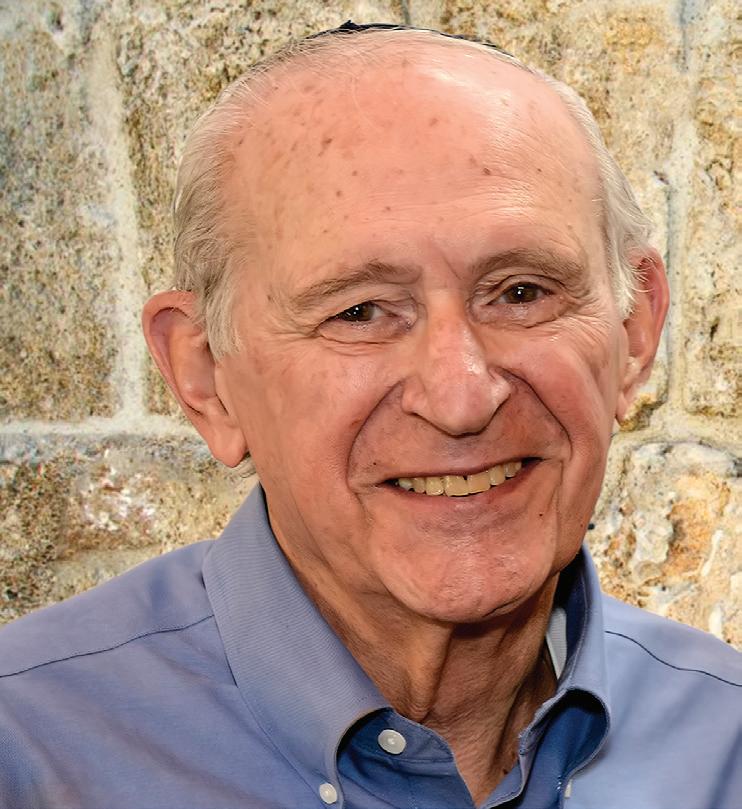
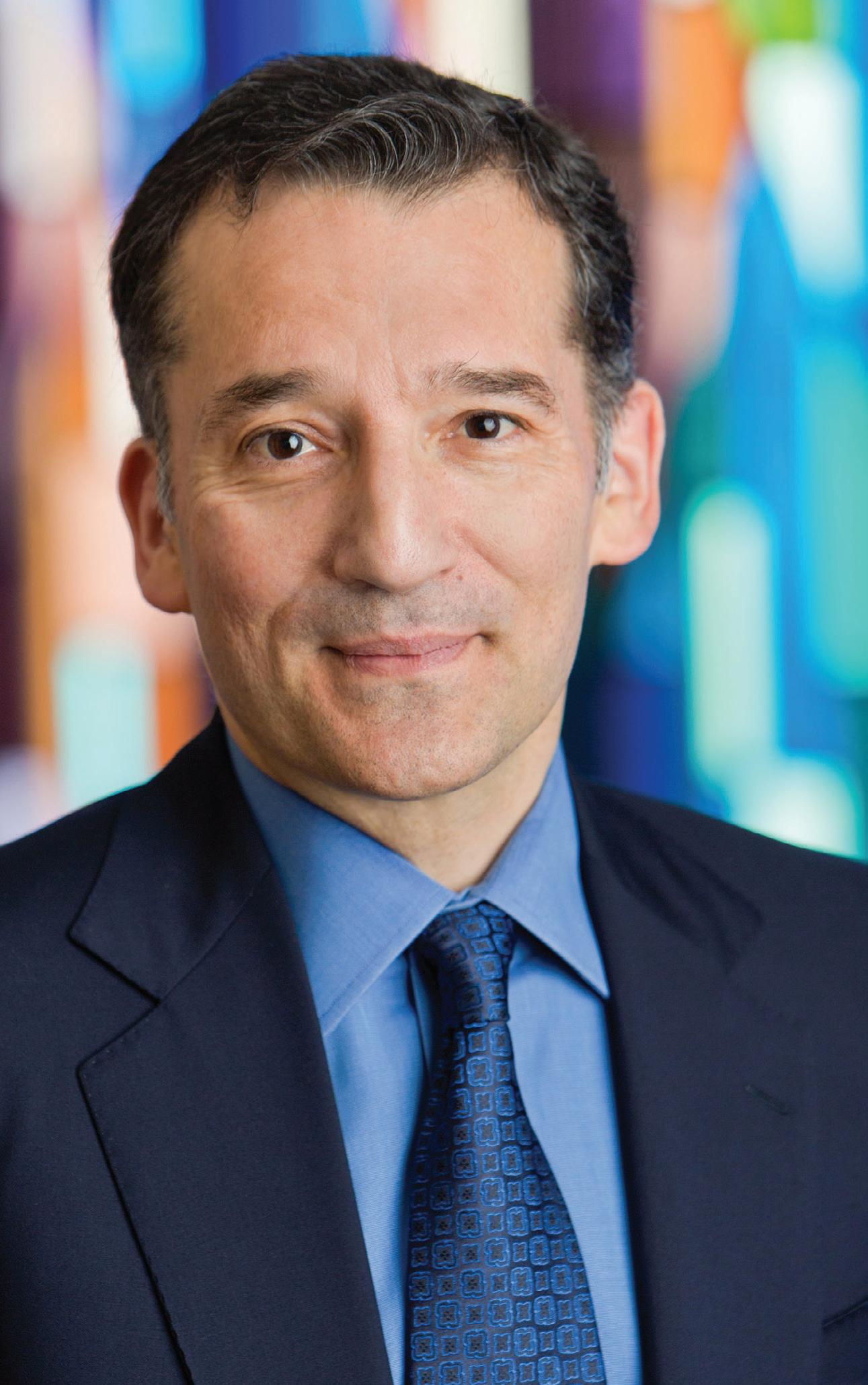
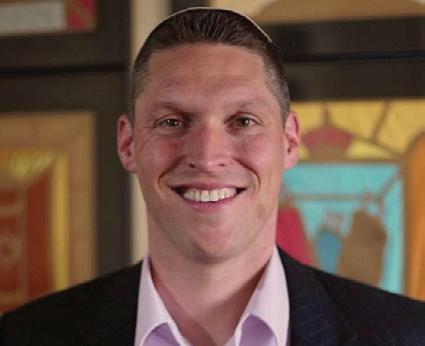
Sherman Minko Memorial Lecture

EVENT SCHEDULE:
6:00 p.m. – 7:00 p.m.
VMB Members’ Dinner (by invitation only)
7:00 p.m. – 8:30 p.m. Lecture
8:30 p.m. – 9:00 p.m.
Dessert and Book Signing (All are welcome)
A hybrid event (In-person & accessible virtually) | $18 or free for members | Learn More at www.ValleyBeitMidrash.org




